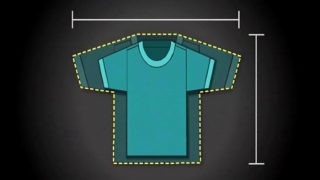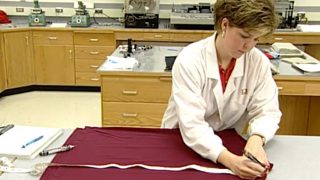Knit Fabric Shrinkage
Knit Fabric Shrinkage
The most important factors relating to shrinkage are fiber, yarn, construction, wet processing, finishing procedures, cut-and-sew techniques, and garment care. Construction and processing shrinkage depend on the construction and processing variables chosen by the manufacturer or customer. Knit fabrics typically are more open and loose in structure than wovens and thus are subject to more instability and dimensional change. To understand shrinkage in knit fabrics, it is important to fully understand the basics of loop formation, the consolidation forces in dyeing and finishing, and the effects of product care.
Knitting Parameters
Learn about knit fabric construction parameters that relate to shrinkage are fiber type, yarn type and structure, type of knitting stitch, stitch length, and finishing techniques. The product specifications serve as the blueprint for the selection of these parameters. These in turn influence the potential for dimensional change in the product.
Dyeing & Finishing Parameters
Wet processing procedures usually create stress on a fabric. Continuous processes during preparation and dyeing and preparation for drying usually stretch the length or reduce the width. If these forces are great, they may exceed the elastic limit, thus permanently changing the fabric’s relaxed dimensions. Finishing procedures may reduce or improve the fabric’s dimensional stability. The use of relaxation dryers, compactors, or crosslinking agents can reduce the residual shrinkage after wet processing. Without these measures, there will be little or no reduction of shrinkage.
Chemical Finishing
For years, chemical crosslinking has been commonly used to stabilize cotton and other natural-fiber knit fabrics, especially in open-width form. Compaction methods, although effective, are used primarily on knits such as underwear fabrics and tubular goods. Improvements in wet processing methods resulting in lower tensions on fabric, such as the evolution of relaxation dryers and the improvement of compaction machinery, have reduced the need for chemical finishing. However, many cotton products continue to use crosslinking agents because of the desire for low shrinkage without the increased bulk resulting from compaction.


